Lifestyle
Maria Turns Into A Plantita!
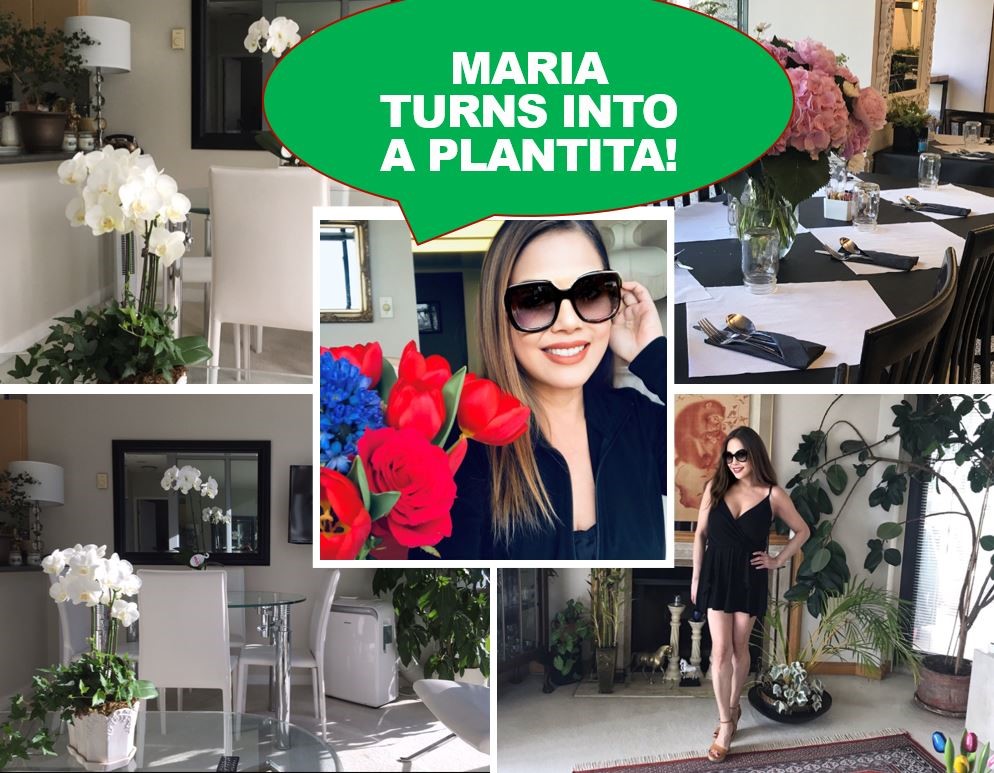
Photo supplied by writer
The 2-month lockdown in Vancouver last spring has turned Maria into a Jill of all trades — one who excels in none of them! Maria became an overnight chef wannabe, a photographer of some sort, a writer baring her soul, an oil painter channeling her inner Van Gogh, a baker of burnt cheesecakes and droopy cupcakes, a make-up aficionado, and yes, a burgeoning Plantita! Of all these activities, Maria loved being a writer, an oil painter, a makeup aficionado, and becoming a Plantita the most.
Let’s focus on Maria turning into a Plantita. For Maria, she’s always loved having plants at her condo. Thank heavens, Maria has a green thumb and not a blue one. Maria believes that there are many reasons why we grow plants: to please both our souls and our eyes; to challenge our patience or the elements; but mostly, we grow plants for the sheer joy in seeing them grow. Our indoor and outdoor gardens require all our attention and our patient labour. Plants do not grow to fulfill good intentions or to satisfy ambitions. Plants thrive because someone expended effort on them — and that’s us — Plantitos y Plantitas! Maria shares her personal experience on how to plant your favourite plants and flowers, which plants and flowers to choose for indoors or outdoors, and some decorating tips for your gardens.
Maria has learned the following beginners’ basic gardening tips:
Choose your location. When you start planting, you have to choose your site like you’re choosing your home location. Choose a location inside your home or outside your garden where you’ll see it regularly (out of sight, out of mind definitely applies to gardening). That way, you’ll be much more likely to spend time in it.
Follow the Sun. You must pay careful attention to where the sun’s direction is coming from. Edible plants such as herbs, fruits, and veggies need at least 6 hours of sun in order to thrive.
Stay near to water. You must plan your new garden near a water source. You must have access to a hose that can run through your garden location. To determine if your plants need watering, you have to put a finger an inch down into the soil to see if it’s dry.
Choose the right soil. You must invest in soil that is well-drained and nutrient rich.
Choose the right container. Maria lives in a condo with no garden, just a balcony and a small patio. When space is at a premium, Maria looked to containers. Maria chose terracotta pots to plant her green leafy companions. She chose pots that are about one-third as tall as the plant (measured from the soil line to the highest leaf).
Select the right plants. Maria chose plants that will thrive in her condo and are easy to maintain or low maintenance. Maria did her homework and picked varieties that will grow well where she lives and in the space she has.
Add mulch. Maria learned that you must apply a layer of mulch that’s 2 to 3 inches deep around each plant. This will help reduce weeds by blocking out the sun, and reduce moisture loss through evaporation, so you have to water less.
Feed your plants regularly with love. Aside from great soil, water, and sunlight — you must feed your plants with top notch plant foods like liquid fertilizers. Its greatest benefit is that it can be sprayed directly onto leaves, which absorbs nutrients more efficiently than roots. Just dilute the fertilizer with water and can be spread using a hose or nozzle attachment. Choose organic fertilizers which are made of natural material like manure (yes, it will stink, but that’s why you have air fresheners and Sage incense stick burners), compost and plant-based products, and work slowly and over the long haul.
Through research, Maria chose the following indoor plants:
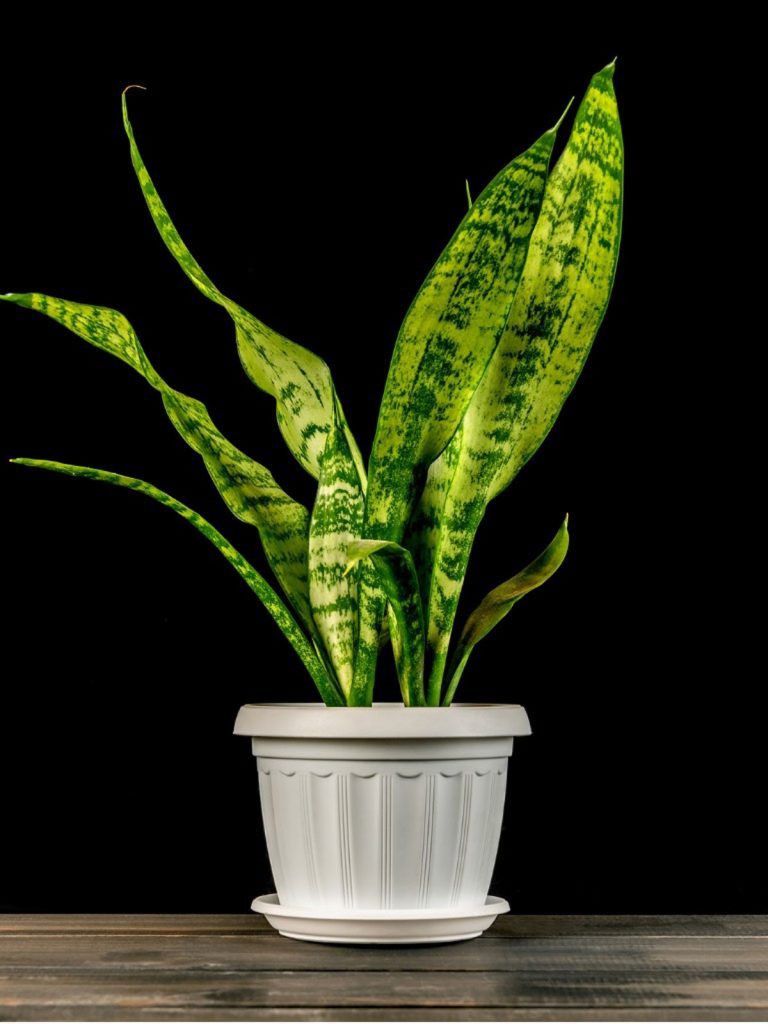
Photo supplied by writer
Snake plants. It’s a low maintenance plant that survives in lower light levels. The Snake Plant absorbs carbon dioxide and as a result releases oxygen during the nighttime, so add one of these to your bedroom and you’re guaranteed to have a peaceful night’s sleep with the additional air boost.
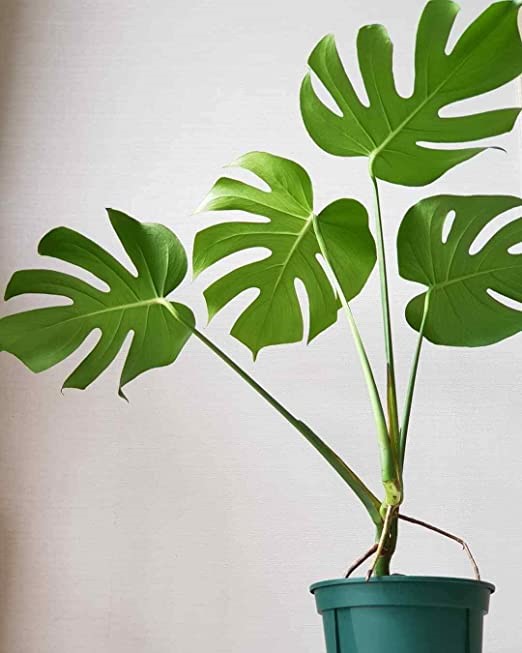
Photo supplied by writer
Monstera Deliciosa. You only need to water this trendy plant every one to two weeks, letting the soil dry out between watering. It doesn’t like direct sunlight. It’s shown to be one of the most effective at reducing air pollutants, like benzene, trichloroethylene, and formaldehyde.
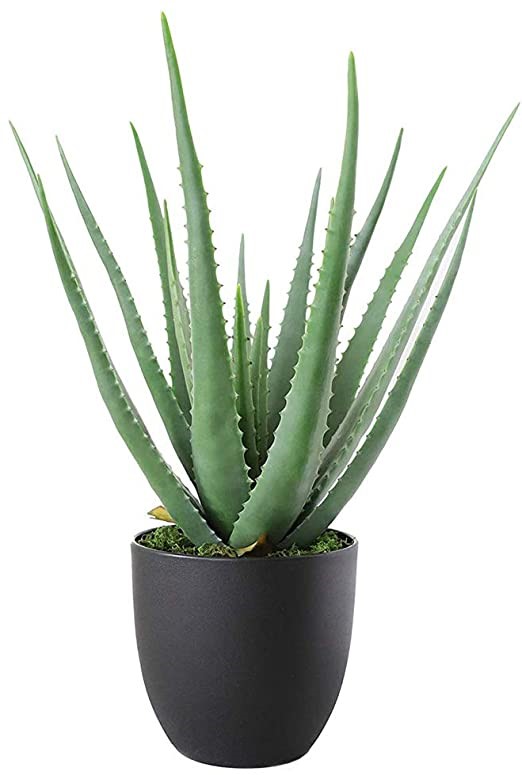
Photo supplied by writer
Aloe Vera. This plant comes complete with a variety of healing properties – from soothing skin burns all the way to detoxing the body. Place this plant where there’s constant sunlight.
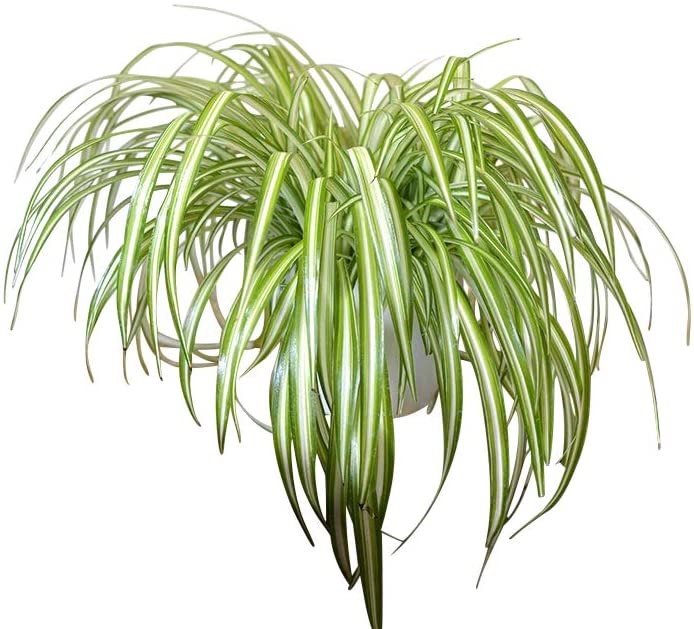
Photo supplied by writer
Spider plant. This plant is both easy to grow and decorative. It is also great at keeping the air in your home ultra clean. Spider plant promotes peace and harmony.
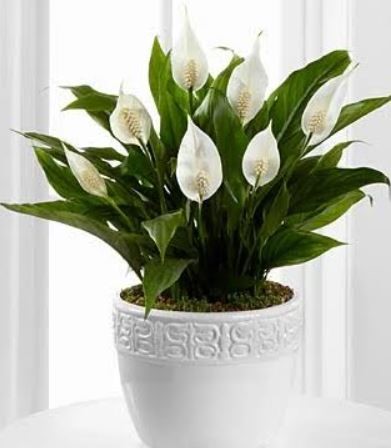
Photo supplied by writer
Peace Lily. A beautiful and low maintenance plant, it is the ideal bloom to keep indoors. It is great at reducing the number of toxins in the air. It is guaranteed to flourish in the shade and cooler temperatures.
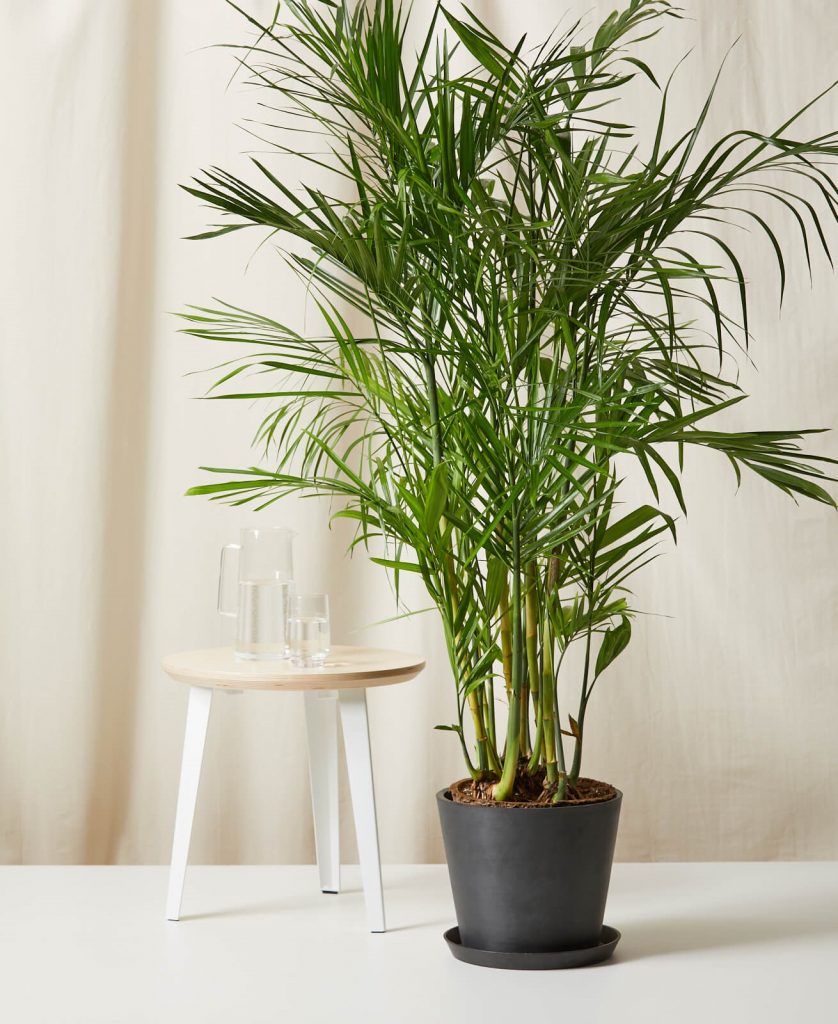
Photo supplied by writer
Bamboo palm. This plant does need plenty of water and a little indirect sunlight. It is also fairly good at getting rid of benzene and trichloroethylene, sure to keep your home stress free! In Feng Shui, bamboo plant attracts wealth and prosperity. It also made NASA’s list of top clean-air plants with its purifying score landing a whopping 8.4!
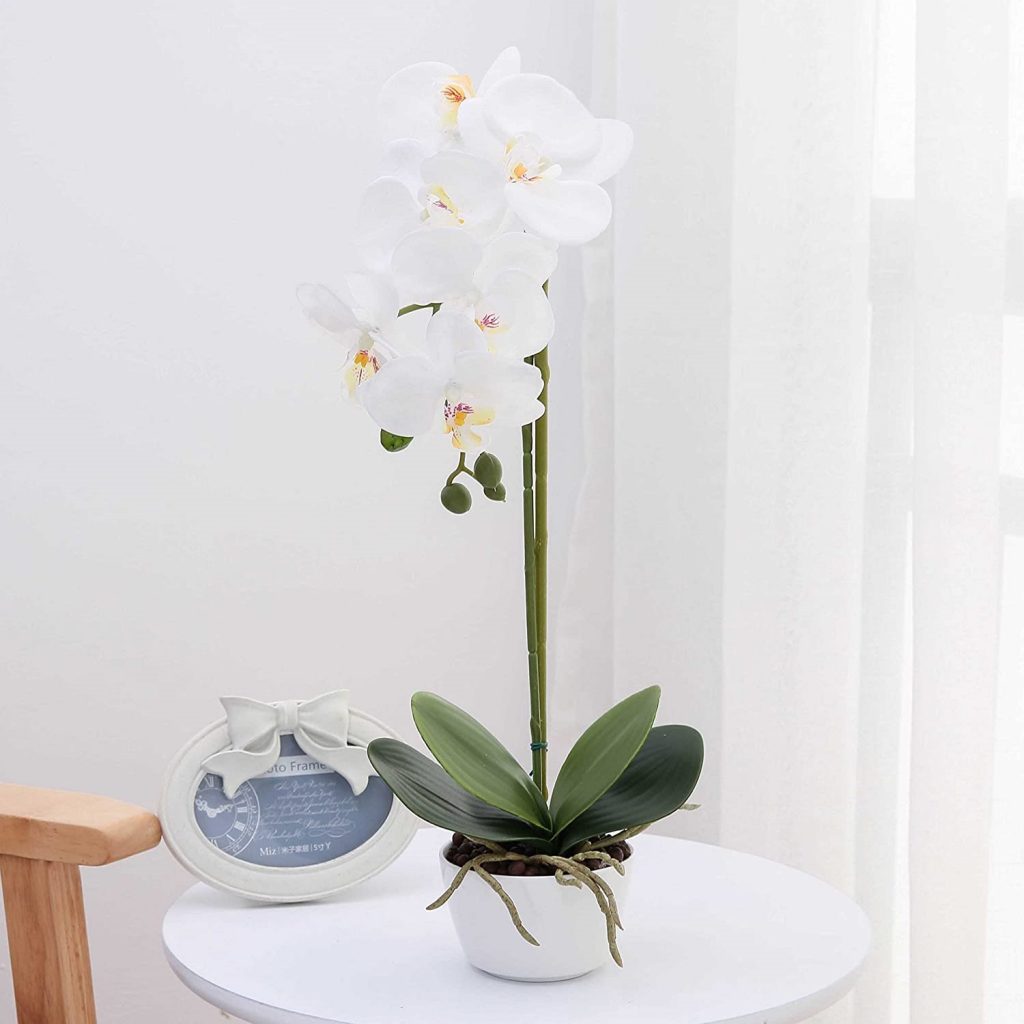
Photo supplied by writer
Orchids. Most people think that orchid care is difficult — it’s not — it’s simply different. In terms of lighting, position your orchid in a bright windowsill facing east or west. Most orchids require water only once a week. Avoid over watering as this can lead to root rot. You must also feed it weekly with fertilizer especially designed for orchids — the best one is FEED ME! MSU. It is the gold standard of orchid fertilizers. Proper potting, lighting, soil base, and watering are all components that are vital to an orchid’s growth. Your orchid should be planted in a pot that has plenty of drainage. There should be drainage holes in the bottom of your pot. It should be planted in fast-draining soil. Using moss-based or bark-based potting mix is suggested. Once a flower has dried, the stem should be pruned. You can cut the old flower spike near the base of the stem.
For outdoor planting, what you select will depend upon the size of your planting space. For smaller exterior gardens, you might want to try the following:
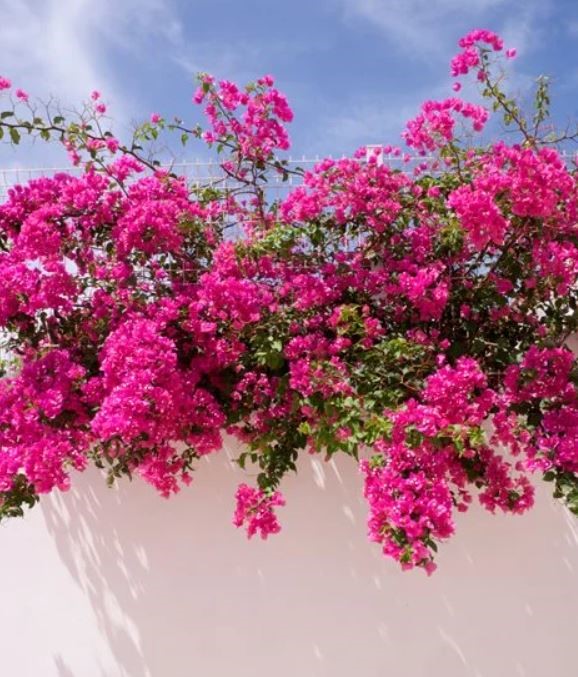
Photo supplied by writer
Bougainvillea. Place these woody vines in a site with full sun and well-draining soil. They prefer loamy soil that contains sand, clay, and silt in equal parts. Amend it with organic matter to allow nutrients to easily reach the roots. You don’t need to worry much about water once the plants mature. Irrigate only when the plants start to wilt, and the soil is dry.
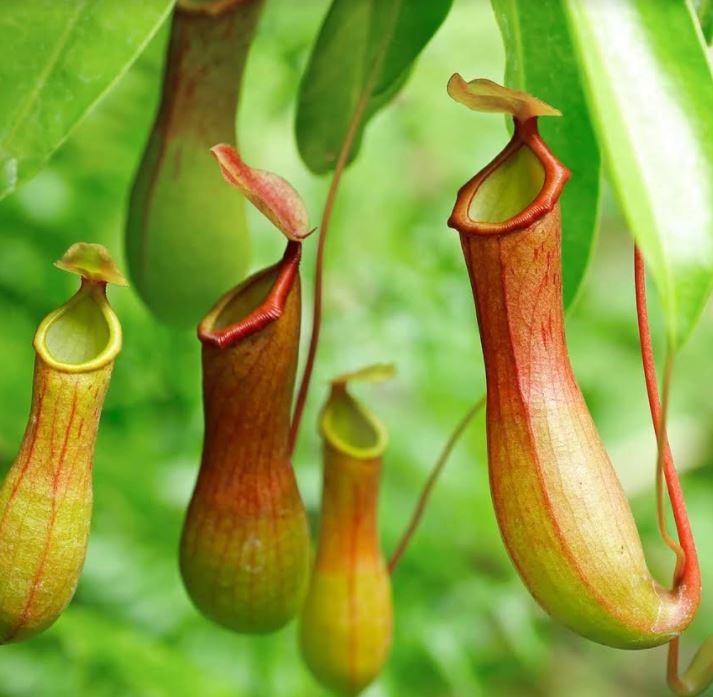
Photo supplied by writer
Tropical pitcher plants (Nepenthes). Growing pitcher plants outdoors and pitcher plant care starts with the site and soil. They do not need rich organic soil but do need a medium that drains well. Caring for pitcher plants is minimal. Most of the plant’s nutrient needs come from the insects they catch in the pitcher shaped organs. Because of this, the care of pitcher plants outdoors does not require much fertilization. Outdoor plants will naturally lose some of the pitcher shaped leaves. Cut them off as they die back. New leaves will form from the rosette base.
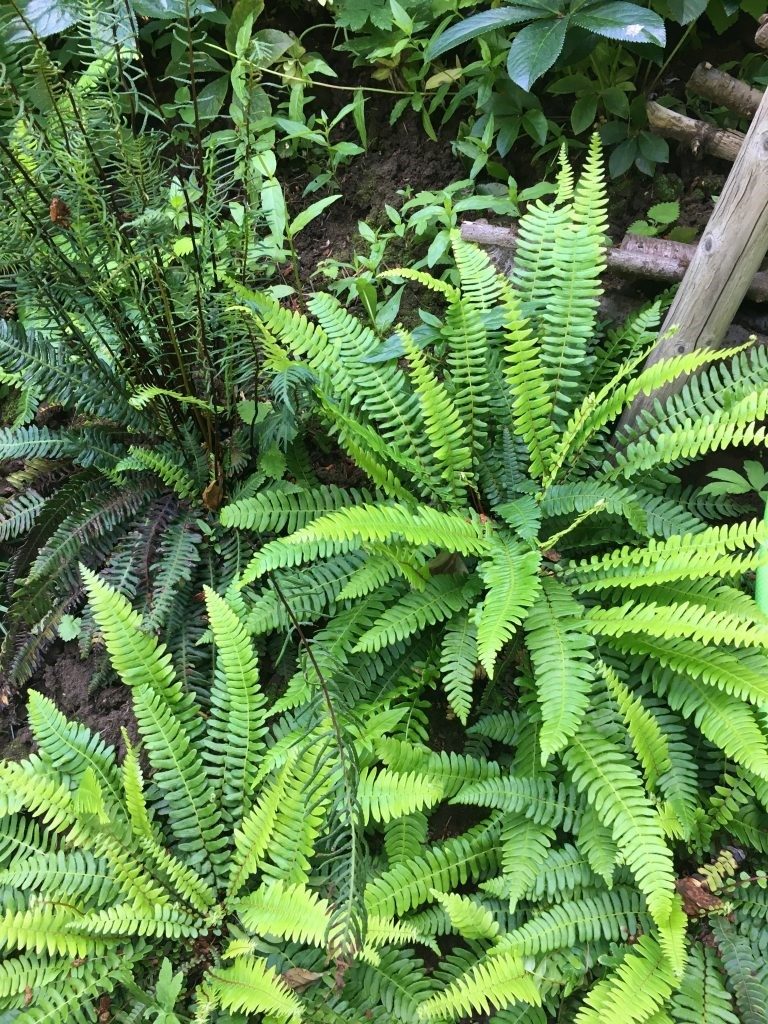
Photo supplied by writer
Ferns. Various ferns such as the lady fern, the autumn fern, the Christmas fern, and the male fern are extremely forgiving and have an incredibly strong survival instinct. Ferns will grow where other plants fail to thrive and most do well in rich, well-drained soil with an abundance of organic matter. Planting a fern garden outdoors requires minimal attention other than regular mulching and water during very dry periods.
For larger outdoor gardens, below are the following plants, flowers, and vegetables you might want to grow:
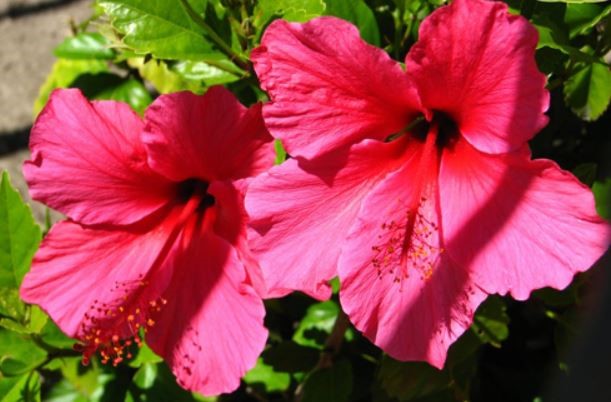
Photo supplied by writer
Hibiscus bush. A lot of Plantitos and Plantitas are growing a hibiscus plant in a container. This allows them to move the hibiscus plant to ideal locations, depending on the time of year. Provide the plants with at least 6 hours of sunlight, especially if you want to see those lovely blooms. Although warm, humid conditions are ideal for tropical hibiscus, you may want to provide a little afternoon shade when it’s overly hot. When hibiscus are in their blooming stage, they require large amounts of water. Your hibiscus will need daily watering in warm weather. But once the weather cools, your hibiscus needs far less water, and too much water can kill it. In the winter, water your hibiscus only when the soil is dry to the touch. Hibiscus plant would need lots of high potassium fertilizer. You can either use a diluted liquid fertilizer once a week, a slow release fertilizer once a month, or you can add a high potassium compost to the soil.
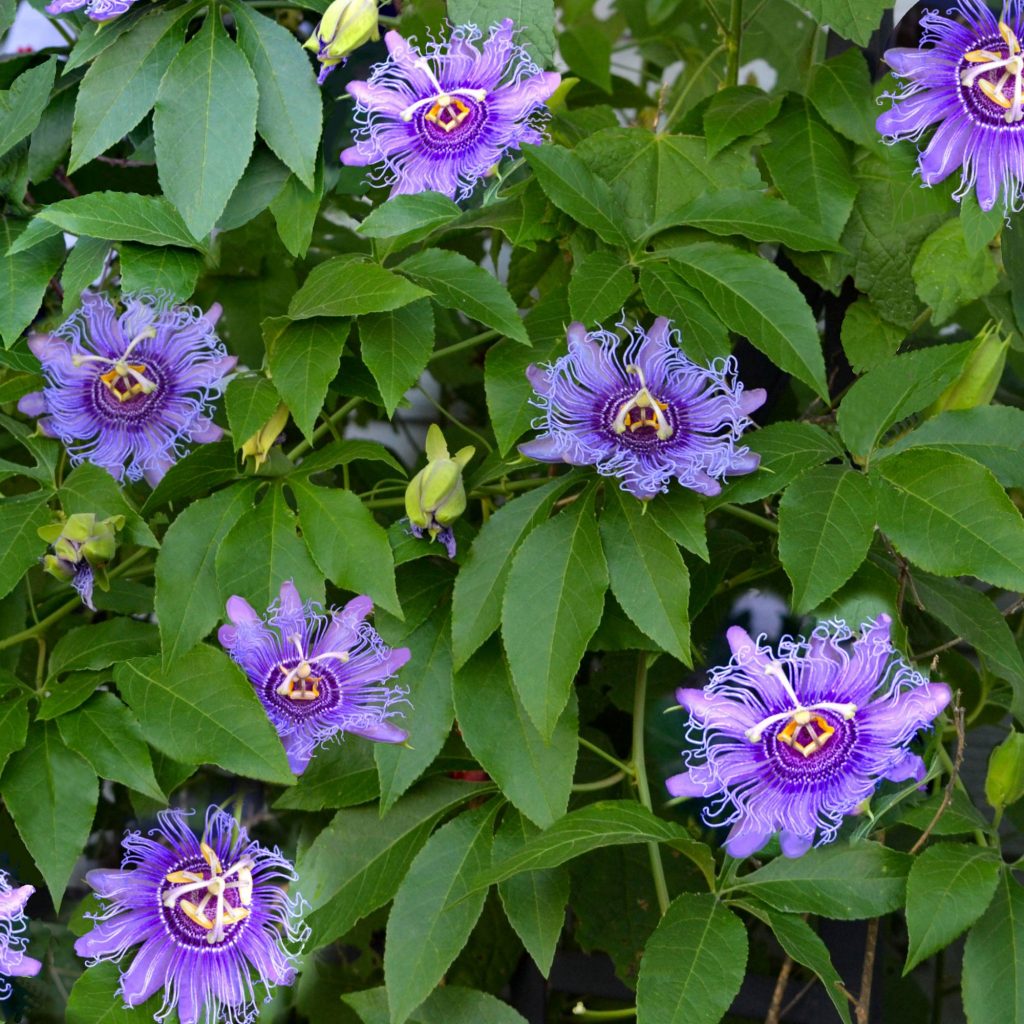
Photo supplied by writer
Passionflower vine. Their vibrant colors and heady fragrance make the passionflower plant a welcome addition to any garden. Because they are vines, the best place for growing passion flowers is along a trellis or fence. Tropical passion flowers need full sun and well drained soil. Two applications of a well-balanced fertilizer per year, once in early spring and one in midsummer is all the passionflower care you’ll need.

Photo supplied by writer
Cinnamon trees. Maria loves the flavour and aroma of cinnamon — most especially when she binges on freshly baked cinnamon rolls! Maria discovered that you could grow cinnamon trees right outside your home. Cinnamon trees are actually small, tropical, evergreen trees and it is their bark which imparts the lovely scent and taste of their essential oils – cinnamon. The tree prefers higher humidity of 50% but will tolerate lower levels. They do well in containers and can be pruned to a smaller size of 3-8 feet. Plant the tree in an acidic potting medium of half peat moss and half perlite. You must fertilize moderately, as excess fertilizer can contribute to root diseases as can cool temperature. Maintain a consistent watering schedule but allow the soil to dry between watering. Prune the plant as desired to maintain its shape and desired size.
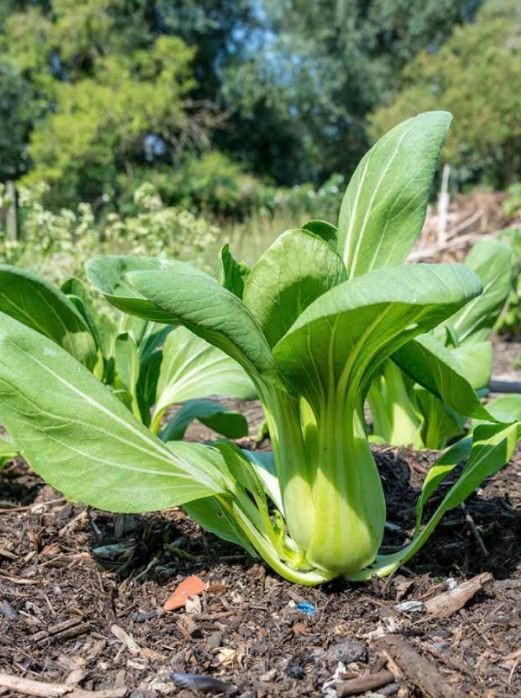
Photo supplied by writer
Bok choy. Variously known as pak choi, pak choy, or bok choi, it is an extremely nutrient-rich Asian green most commonly used in stir fries. Bok choy are rapid growers, with baby maturing in about 40 days and full-sized bok choy in about 50. It grows best in the cool, shorter days of fall and the early spring. Prepare a sunny area in the garden for planting in the early spring or fall. Work in an inch (2.5 cm.) of compost into the top 6 inches (15 cm.) of soil. Smooth out the soil with a garden rake. Directly sow the seeds 2 inches (5 cm.) apart and ¼ inch (.6 cm.) deep. Water the seeds well and keep the seeded area moist. Fertilize the baby bok choy 3 weeks after sowing. Keep the planting area consistently moist and free of weeds.
Decorate your interior and exterior gardens with below tips:
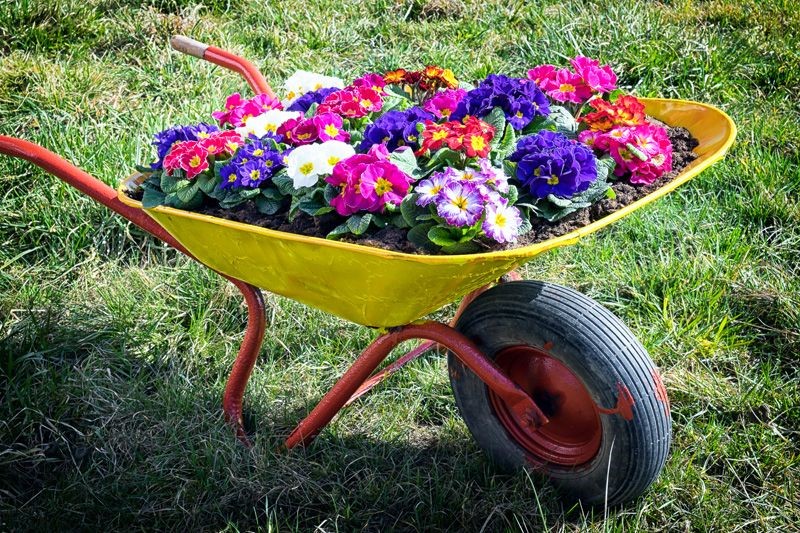
Photo supplied by writer
Use rusty vintage wheelbarrows. Put soil in your wheelbarrow and plant some colourful flowers and leafy greens for that charming rustic look.
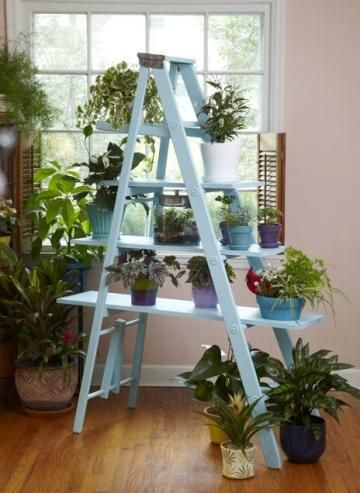
Photo supplied by writer
Vintage ladders flowerpot displays. Do not throw away your old ladders. You can use it to set up some flowerpots along its steps and make it your garden centerpiece.
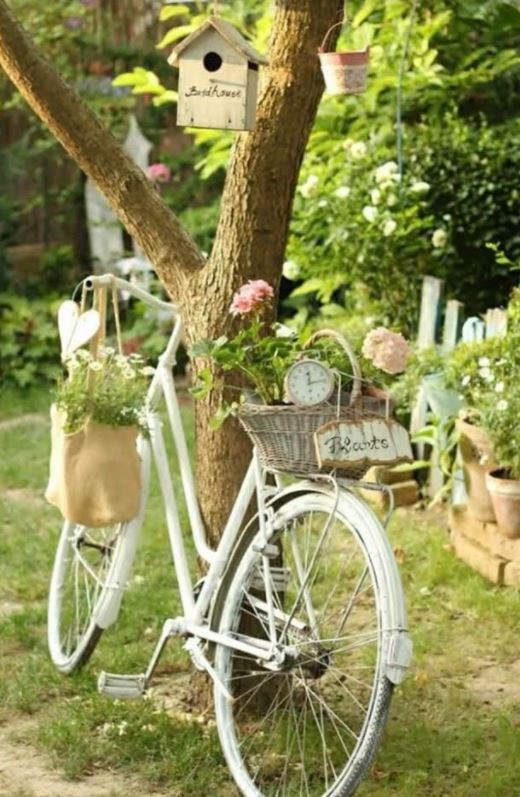
Photo supplied by writer
Repurpose your old bicycle. Instead of putting your old bicycle in your garage, put it on display outside your garden. Paint it white, or pink or blue and station it beside a tree. Put flower baskets where you can plant beautiful flowers.

Photo supplied by writer
Use soup ladles for your succulent plant display. Paint your soup ladles with rainbow colours, put some good soil and plant your succulents. Hang these on your garden walls or trellises.
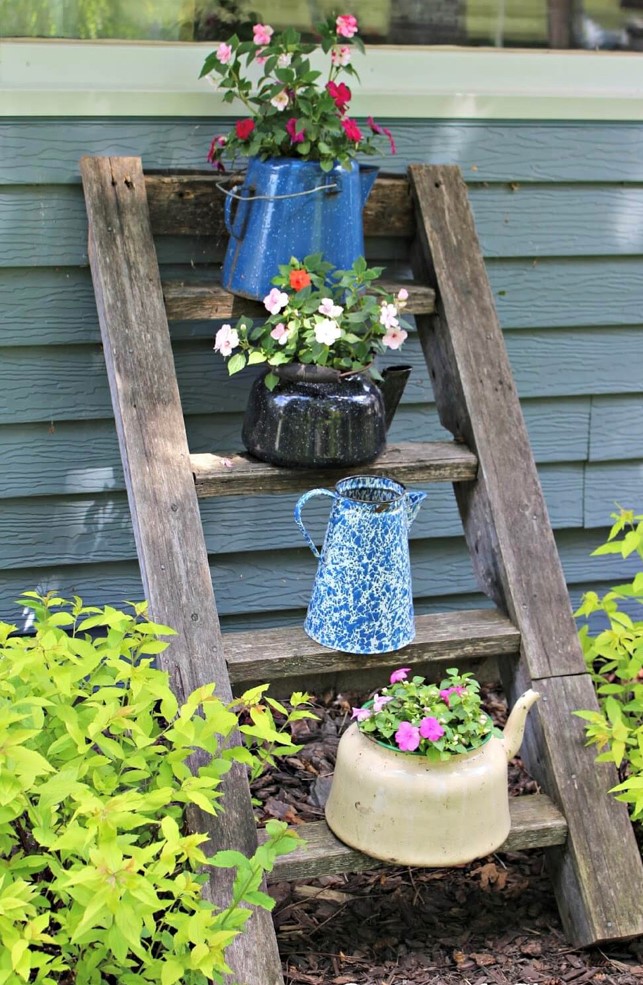
Photo supplied by writer
Coffee pots and pitchers as planters! Don’t throw away old coffee pots and water pitchers. Again, paint them in colourful hues and put soil in them and plant your favourite flowers.
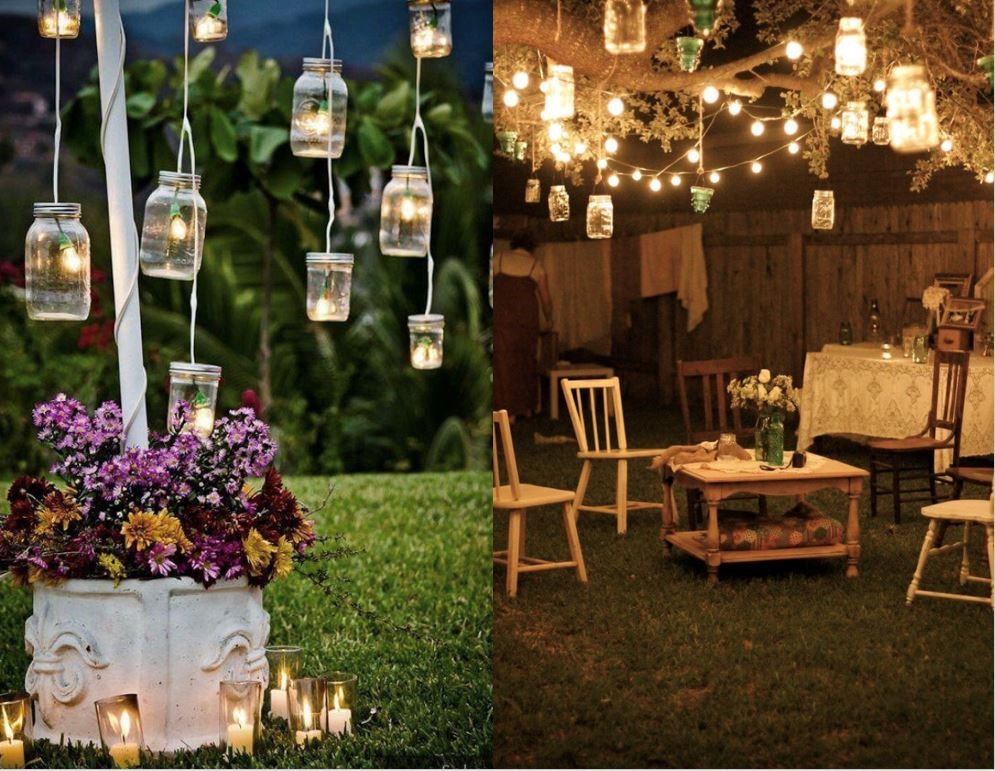
Photo supplied by writer
Mason jars for outdoor lighting. For evening lighting, use mason jars that can be transformed into decorative lanterns.
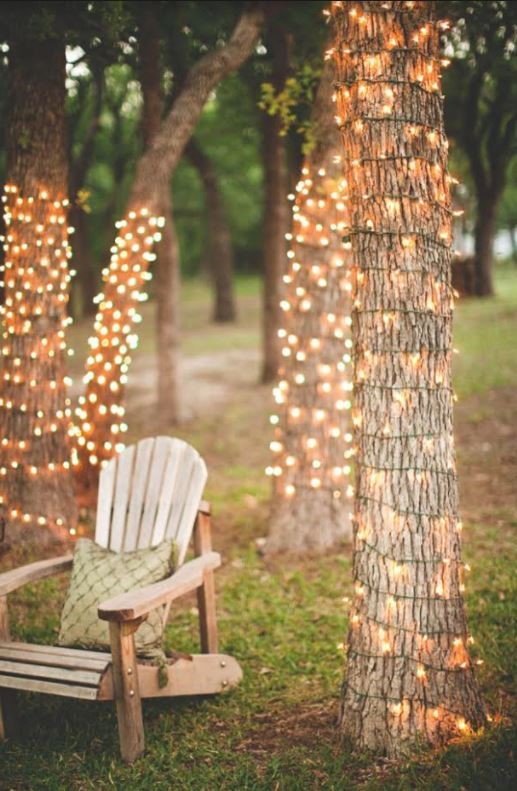
Photo supplied by writer
Wrap your tree trunks with string lights! You don’t have to wait for Christmas to decorate your tree trunks with string lights! This could be all year round. String lights always add a magical effect to basically anything you wrap them around into.
According to Claude Monet: “My
garden is my most beautiful masterpiece.” With that said, gardening teaches us
the single greatest lesson: our personal relationship with Mother Earth can
bloom for as long as we can plant and plan; for as long as the sun still shines
and the sky showers us with rain — our indoor and outdoor gardens suggest there
might be a place where we can meet nature halfway. Happy gardening Plantitos y
Plantitas!





















